Galapagos Seasickness
Should you be worried about seasickness in the Galapagos? This is one of the most common questions that our team receives during Galapagos trip planning.
Let’s face it, nothing ruins a cruise or boat trip more than seasickness. The rocking and swaying of a boat on water can cause misery for those of us prone to motion sickness.
As the second-largest marine reserve on the planet, the Galapagos Islands are one of the top travel destinations for cruising and water-based activities. But, while seasickness is a possibility in the Galapagos, it's by no means a certainty, and most travelers enjoy their trips without any significant issues.
Don't let the prospect of rough seas deter you from experiencing one of the world's most remarkable wildlife destinations. Understanding seasickness—its causes, prevention strategies, and treatment options—goes a long way towards avoidance. With proper preparation and realistic expectations, you can minimize the impact and maximize your chances of fully experiencing the magic that awaits in the enchanted isles.
Keep reading for everything you need to know to avoid seasickness in Galapagos. We’ll cover all of the top tips and recommendations to keep motion sickness at bay
SECURE YOUR GALAPAGOS TRAVEL
Get a FREE personalised quote today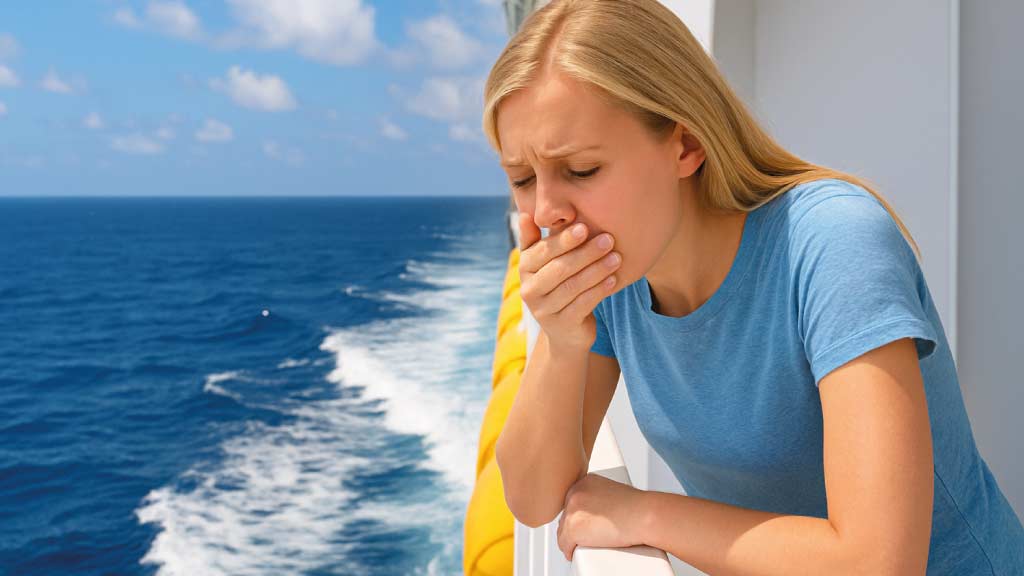
What is Seasickness?
Seasickness is not an illness, but a form of motion sickness that occurs when your body's balance system becomes confused by the constant motion of a
boat or ship. At its core, seasickness results from a conflict between what your eyes see and what your inner ear feels.
When you're below deck reading a book, for example, your eyes perceive a stationary environment while your inner ear's vestibular system detects the rolling, pitching, and swaying motion of the vessel. This sensory mismatch sends conflicting signals to your brain, which can trigger the cascade of unpleasant symptoms we know as seasickness.

Which people suffer most from Seasickness?
Interestingly, not everyone suffers from seasickness. Even experienced sailors can fall victim to rough sea conditions, while first-time cruisers might sail through choppy waters without a hint of discomfort. In fact, one of the most famous visitors to Galapagos, Charles Darwin, had notoriously bad sea legs, despite sailing around the world on HMS Beagle from 1831 to 1836.
Seasickness also affects people differently, with symptoms ranging from mild uneasiness to severe nausea, vomiting, dizziness, and cold sweats. Some people experience fatigue, headaches, or a general feeling of malaise that can persist even after returning to solid ground.
Your susceptibility to seasickness depends on various factors, including your individual sensitivity to motion, the sea conditions, the size and stability of the vessel, and even your mental state. Anxiety about getting seasick can actually increase your likelihood of experiencing symptoms, while staying calm and prepared can help your body adapt more quickly to the maritime environment.
The good news is that most people's bodies eventually adapt to the motion of the sea, a process called habituation that typically occurs within a few days of continuous exposure to the ship's movement.
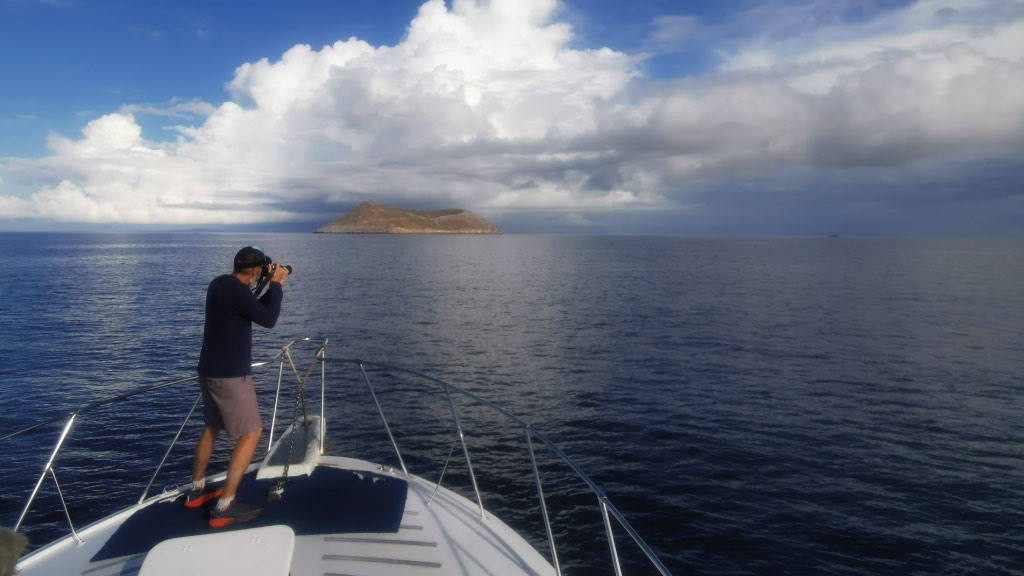
Seasickness at Galapagos: Should you be Worried?
Actually, yes and no. While some travelers may experience mild discomfort at times during a Galapagos cruise, for most, it’s nothing more than a passing moment. In fact, by following our seasickness travel tips below, there’s a great chance you’ll barely notice it.
It’s also important to consider that the Galapagos Islands enjoy consistently mild weather all year round, without tropical hurricanes or severe storms, making it one of the safest and most stable cruising destinations.
Compare this to other popular cruise destinations like Alaska or Antarctica, and the Galapagos is a cakewalk.
How to Avoid Seasickness at the Galapagos Islands?
Time to cut to the chase. Let’s talk about our 10 best tips to avoid suffering from seasickness in the Galapagos.
By following these recommendations, there’s every chance you will enjoy a magical Galapagos vacation without the ill effects of motion sickness.
1. Choose the right Galapagos tour to avoid seasickness
The Galapagos Islands are a travel destination with different tour choices.
Galapagos cruising is the most popular way to visit. You’ll spend your days and nights on a live-aboard Galapagos yacht, disembarking each day at a new island for land visits and snorkeling.
Naturally, on a cruise, you’ll be out on the ocean for much of the time. So, how can you minimize seasickness on a Galapagos cruise? If motion sickness is a worry, then look to larger cruise ships like the Galapagos Legend or La Pinta for more stability in the open ocean. Of the smaller 16-passenger vessels, catamarans like the Ocean Spray, Endemic, or Archipel I promise the smoothest ride.
Galapagos land tours are an alternative to cruising. Instead of nights on open water, you’ll enjoy the comfort of a hotel bed on terra firma. There are programmed activities and visits to national park sites to enjoy each day, plus freedom and flexibility to explore by yourselves.
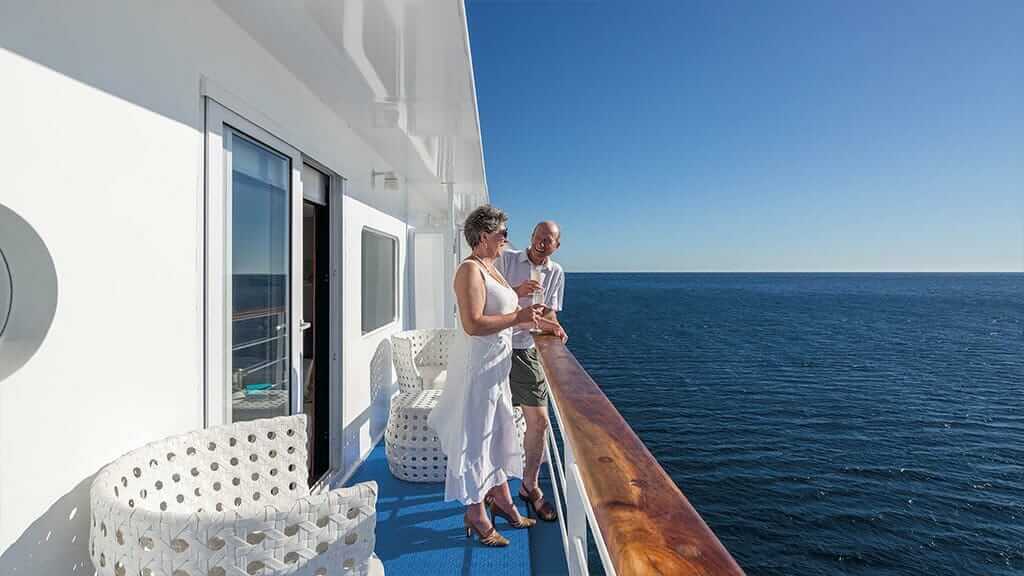
Galapagos land tours are an alternative to cruising. Instead of nights on open water, you’ll enjoy the comfort of a hotel bed on terra firma. There are programmed activities and visits to national park sites to enjoy each day, plus freedom and flexibility to explore by yourselves.
Happy Gringo’s 6-day Galapagos Discovery and 8-day Galapagos Explorer land tours are popular examples to consider.
However, do remember that most land trips also involve navigable day trips to nearby islands. While you’ll not be sleeping at sea, you should be prepared for 1-2-hour ocean navigations.
For travelers looking to avoid boat travel altogether, the best choice is a customized land tour. Our experienced team can tailor a special itinerary focusing on land-based activities and beach snorkeling, while using intra-island flights to avoid bumpy Galapagos ferry rides.

2. Book the right Galapagos cruise cabin for stability
For those going down the Galapagos cruising route, we recommend that you study the yacht deck plan carefully.
It’s possible to request a specific cabin # when you book, but what are the best cabins to avoid Galapagos seasickness?
Typically, cabins located mid-ship and on the lower deck close to the water will experience less motion.
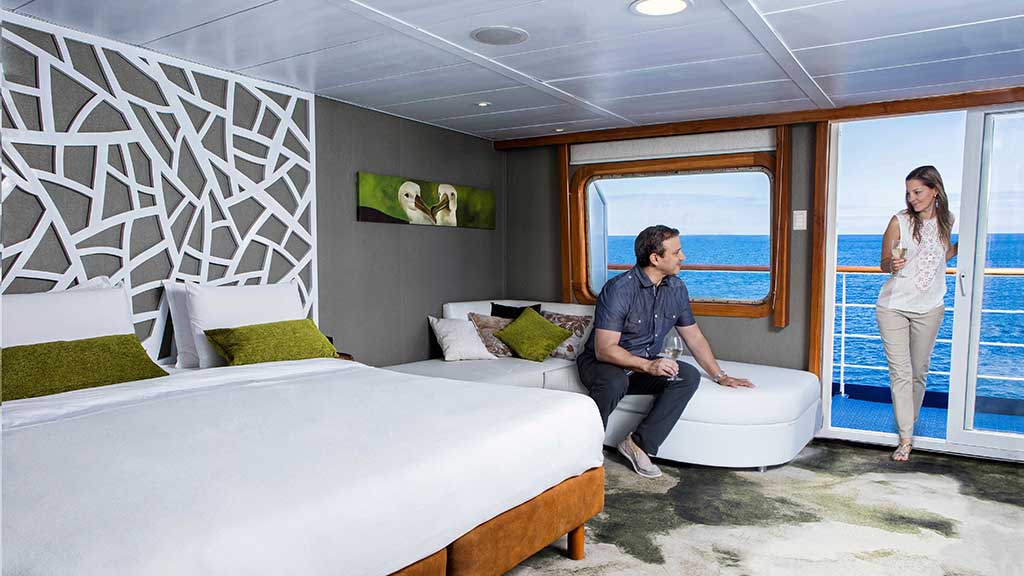
3. Travel in the best Galapagos climate season to avoid seasickness
Whilst the Galapagos Islands are a year-round travel destination, there are certain months of the year with calmer seas.
To avoid seasickness, we recommend cruising in the warm & wet season, from January to June.
The months to avoid are September and October, when Galapagos seas are at their roughest, although conditions are not extreme even at this time of the year.
That said, remember that sea conditions are unpredictable, so this tip is just a guideline. You could, for example, experience calm or rough Galapagos seas on any day of the year.
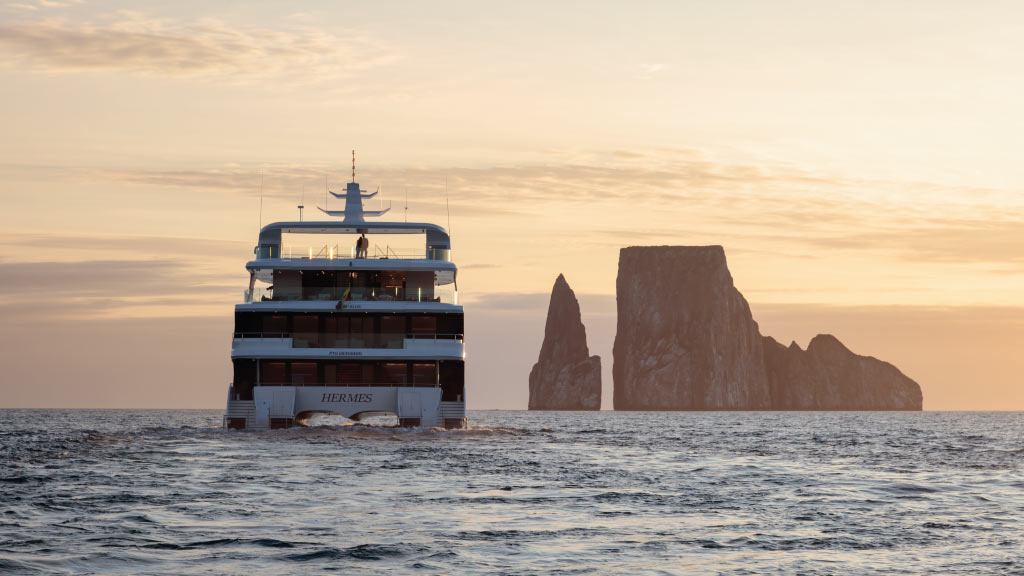
4. Compare Galapagos cruise itineraries to avoid seasickness
The Galapagos archipelago is immense, with 13 major islands, 40+ smaller islands, and many more rocky outcrops scattered across the 198,000 square kilometers (76,000 square miles) marine reserve.
Galapagos cruise yachts follow different itineraries around the archipelago, all approved by the National Park Service. Not all cruise itineraries are created equal, so careful trip planning can help reduce the probability of seasickness.
Itineraries with more open-ocean crossings than others potentially increase the chances of suffering from seasickness. These crossings include the route up to Genovesa Island, cruises around the tip of Isabela, and the crossing from Española to San Cristobal, for example.
Whereas, an itinerary with shorter hops in sheltered channels, such as the northern route to Santiago, North Seymour, and Rabida, can be smoother and faster voyages.

GET FREE ADVICE
From a Galapagos destination expert today5. Remember to pack seasickness medication
Over-the-counter medications like Dramamine or prescription scopolamine patches are effective in preventing or reducing seasickness. We strongly recommend that even the most experienced sailor include some seasickness medication on their Galapagos packing list, just in case.
It’s easier to buy seasickness medication in your home country before traveling. While Ecuador and Galapagos drug stores do stock these medications, they may not have your preferred brand.
Don’t forget, it’s important to take Galapagos seasickness medication BEFORE you start to feel the onset of symptoms
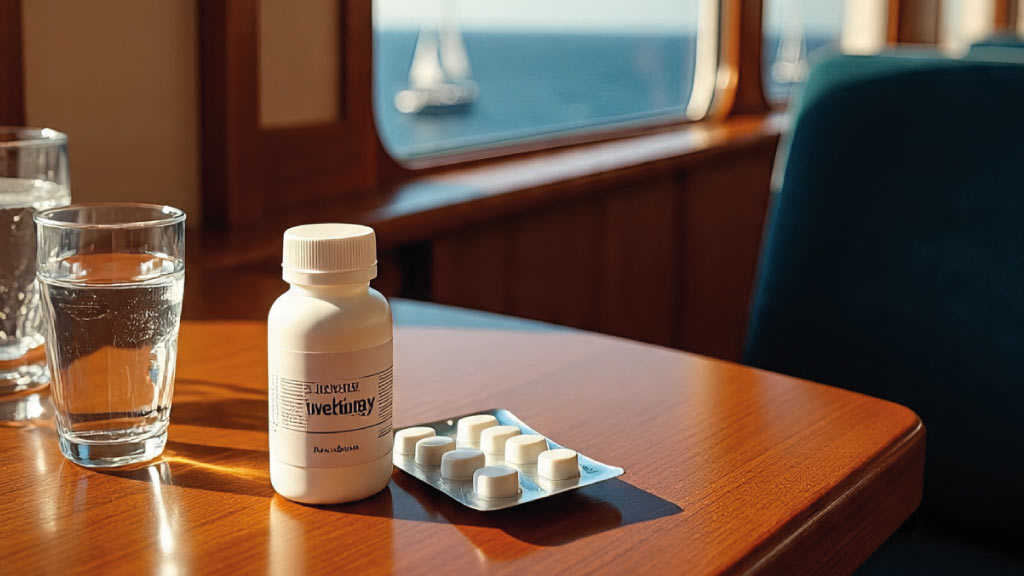
6. Try natural anti-seasickness remedies
As well as drug store medications, some travelers swear by natural remedies that help to avoid seasickness.
Ginger is the most popular natural seasickness remedy. Ginger pills, tea bags, and even caramelized ginger are easy to slip into your day pack.
Acupressure wristbands are another choice that may be effective for some travelers.
My advice is to pack both natural and traditional drug store medications to cover all bases.
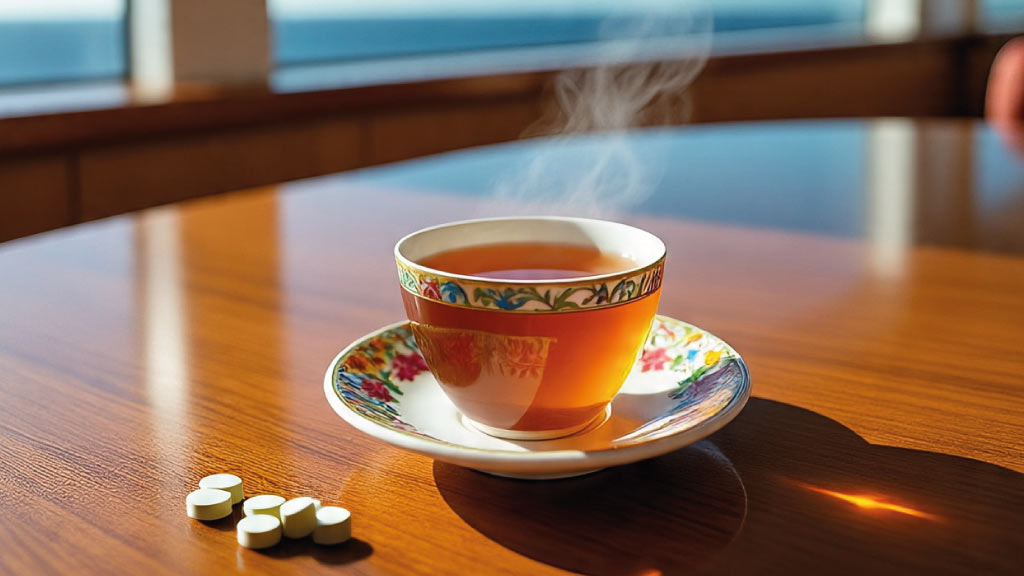
7. Focus on the horizon
Another common tip to help avoid motion sickness in cars or on boats is to focus on the distant horizon instead of objects that are close to you.
Reading or messaging on a cellphone, for example, can exaggerate queasy feelings of motion sickness. So, if you are going through a rough patch of sea, put your book to one side, and try to focus on a far-off view of the horizon, until you hit calmer waters again.
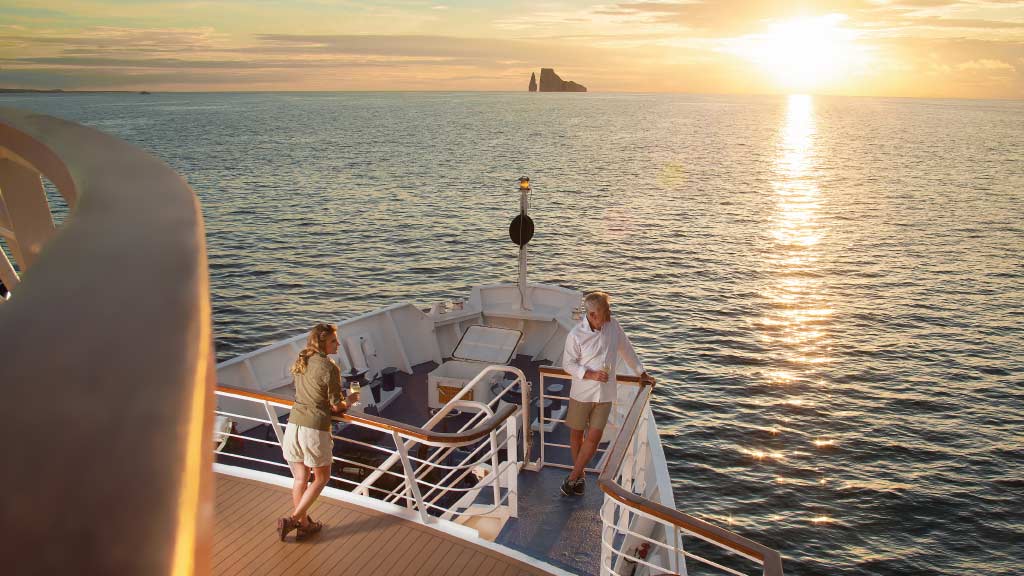
8. Take a breath of fresh ai
Another great help to carry you through a rough moment on rolling seas is to head outside and take deep, slow breaths.
All yachts, no matter the size, have outdoor social areas, and some cabins even come with a private balcony. So, you’ll never be more than a few steps away from some welcome fresh air.
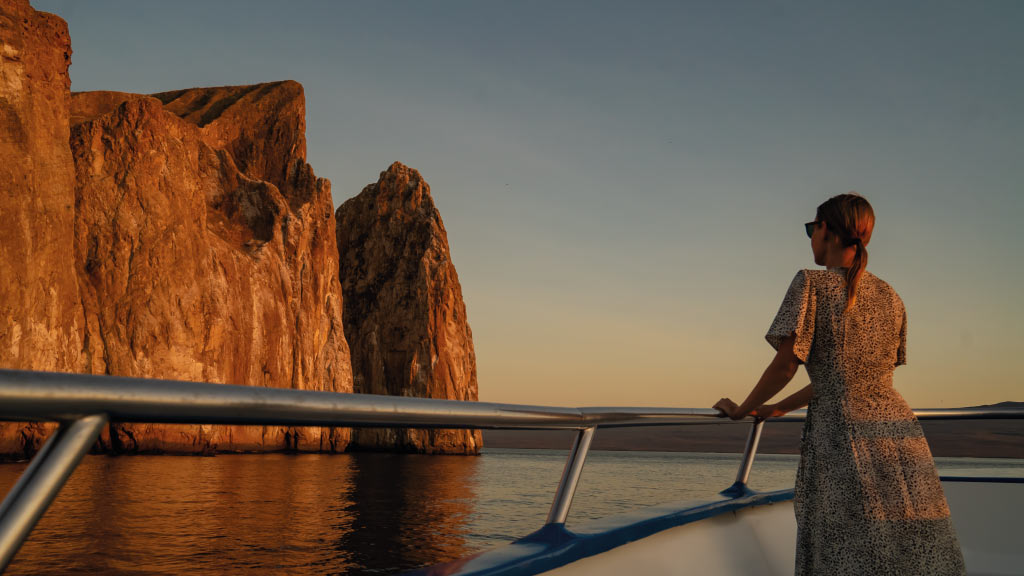
9. Avoid heavy meals & alcohol
During the first days of a Galapagos cruise, try to take it easy at the buffet meal service and at the bar. This tip also applies during any period of rougher-than-usual seas on your voyage.
A light meal that’s easy to digest makes it easier for your stomach to handle any queasiness caused by motion sickness.

10. Try breathing exercises and meditation
One of my personal favorites to avoid seasickness is to do some simple meditation exercises through choppy seas or air turbulence on a flight.
It doesn’t have to be anything fancy. Just find a quiet spot outside in the fresh air. Take a comfortable seated position. Close your eyes. Breathe in & out, slowly, deeply, and deliberately. Repeat for as long as required.
I find that this simple approach takes my mind away from the problem at hand and has a deeply calming impact.
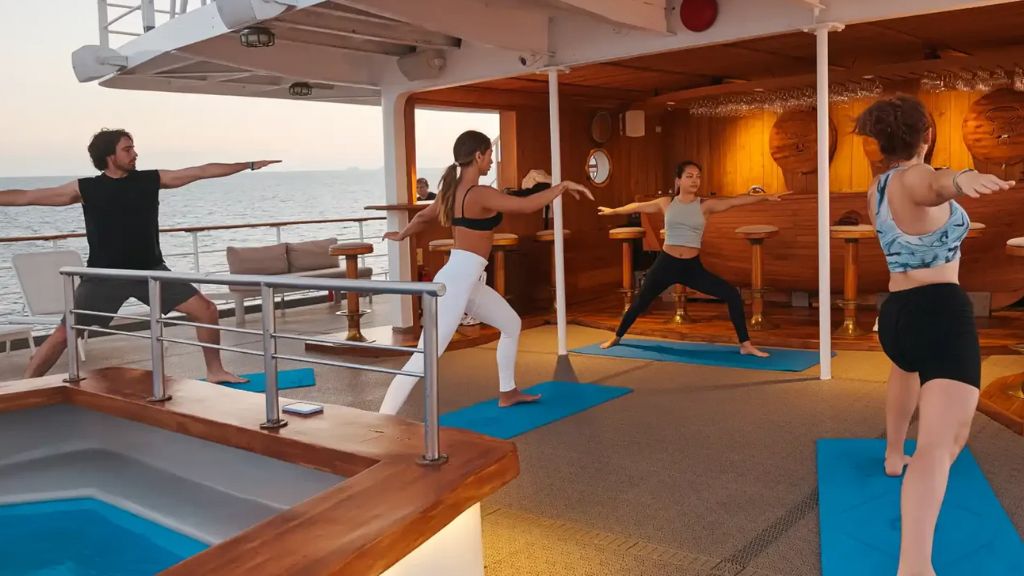
What about Galapagos travelers who are very sensitive to seasickness?
For those more delicate among us or who have experienced serious problems of seasickness in the past, I recommend the following steps:
· Your most sensible choice is a Galapagos land tour.
· Speak to one of our destination experts to help customize your itinerary. Aim to avoid or minimize navigable day tours and intra-island ferry journeys.
· San Cristobal and/or Isabela could be great island bases. Both islands have beautiful beaches, easily accessible wildlife, and fun activities that don’t have to involve much boat travel.

Book With The #1 Trusted
Galapagos Travel Agency
For help in booking your Ecuador or Galapagos Trip, contact us for a FREE QUOTE. Happy Gringo have close to 20 years of experience helping 10k+ tourists to successfully make their dream vacation happen.
As well as the Galapagos Islands, we specialize in custom-made itineraries including mainland Ecuador, the Amazon Rainforest, Cloud Forest, Peru, Colombia, and much more besides.
In conclusion, while there is a risk of suffering from seasickness at the Galapagos Islands, more often than not it doesn’t become a big issue for travelers.
By following the tips that I have listed above, you have a great chance of avoiding any seasickness or queasiness.
In particular, I recommend choosing the right Galapagos trip for your level of sea worthiness. Travel with both natural and drug store medications just in case. Also, don’t forget the golden rule of focusing on the horizon if and when the sea does get a little on the rough side.
Happy travels, and do let me know if you have any additional tips that work for you to avoid seasickness aboard a yacht or ship.
